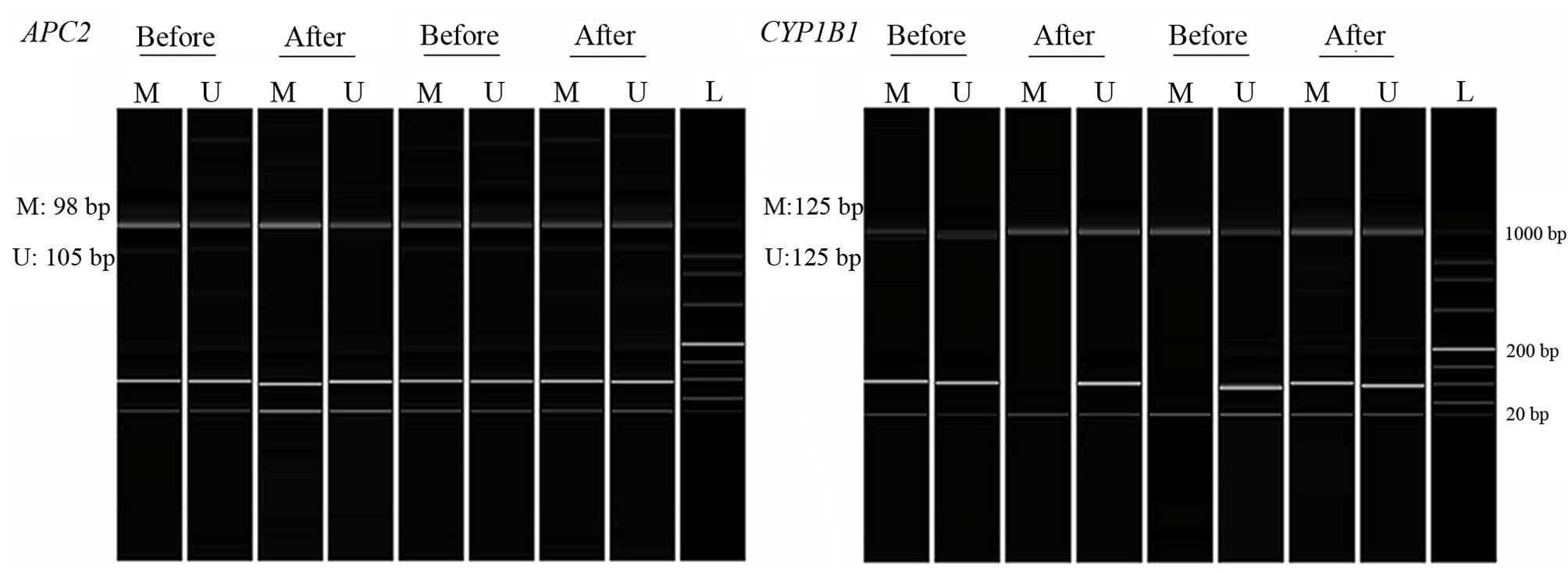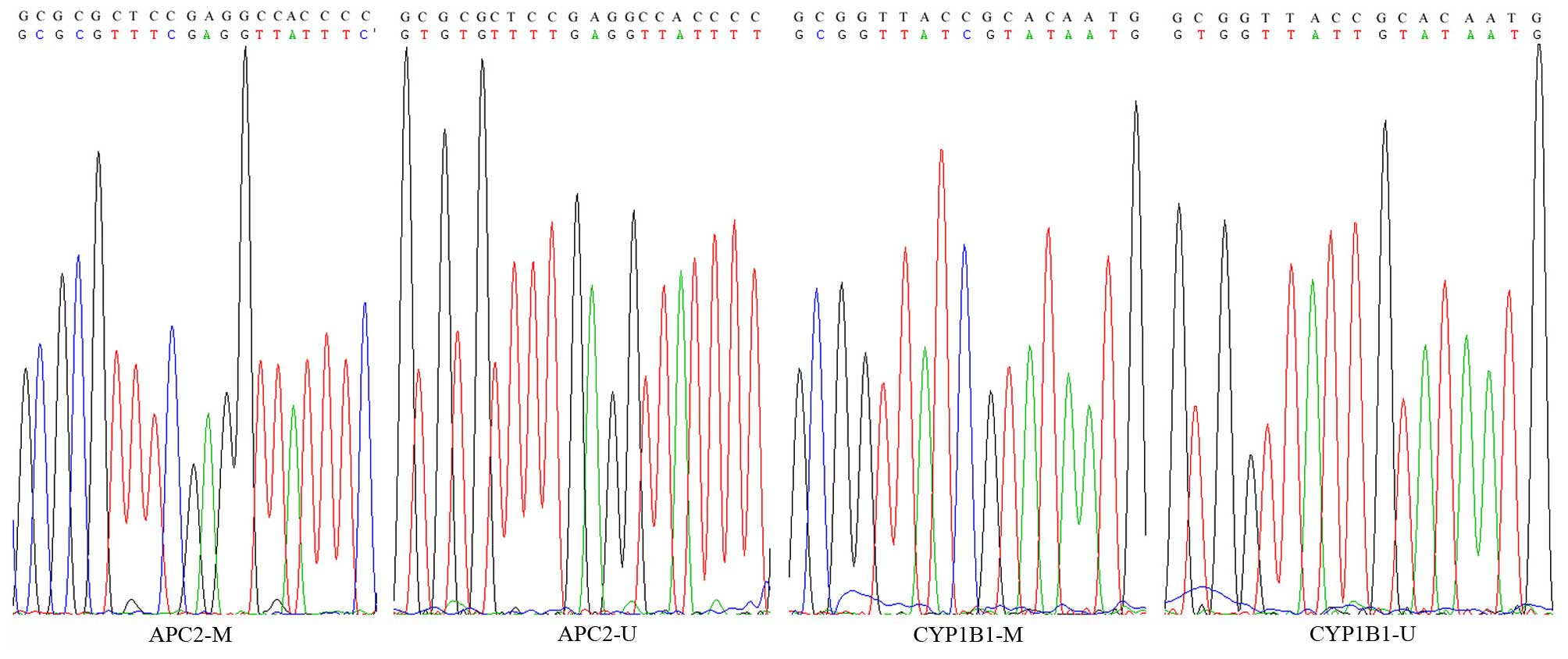APC2 and CYP1B1 methylation changes in the bone marrow of acute myeloid leukemia patients during chemotherapy
- Authors:
- Published online on: September 20, 2016 https://doi.org/10.3892/etm.2016.3719
- Pages: 3047-3052
Metrics:
Total
Views: 0 (Spandidos Publications: | PMC Statistics:
)
Total PDF Downloads: 0 (Spandidos Publications: | PMC Statistics:
)
Abstract
Aberrant promoter DNA methylation is a major mechanism of leukemogenesis in hematologic malignancies, including acute myeloid leukemia (AML). However, the association between promoter methylation with chemotherapeutic outcomes remains unknown. In the present study, bone marrow samples were collected prior to and following chemotherapy in 30 AML patients. Methylation‑specific polymerase chain reaction technology was used to examine the promoter methylation status of adenomatous polyposis col 2 (APC2) and cytochrome P450 family 1 subfamily B polypeptide 1 (CYP1B1). The results revealed no change in the methylation status of the APC2 promoter in patients following various chemotherapy regimens. However, the methylation status of the CYP1B1 promoter changed in response to 6 different chemotherapy regimens. AML patients of the M3 subtype displayed an induction of the CYP1B1 promoter methylation levels more frequently (57.1%) than patients affected by the other subtypes (M1: 33.3%; M2: 12.5%; M4: 16.7%; M5: 0% and M6: 0%). In addition, a higher frequency of male patients (4/13) exhibited modulation of the CYP1B1 promoter methylation status compared with female patients (3/17). Furthermore, of five AML patients with a poor prognosis, two exhibited changes leading to CYP1B1 hypomethylation and two leading to CYP1B1 hypermethylation. By contrast, three other patients exhibited hypermethylation changes along with remission. This may be explained by the different chemotherapy regimens used to treat these patients or by other unknown factors. The present study revealed that CYP1B1 promoter methylation was induced during chemotherapy, whereas the APC2 promoter remained hemimethylated. Furthermore, the changes in CYP1B1 methylation were dependent on the AML subtypes and the gender of the patients.












